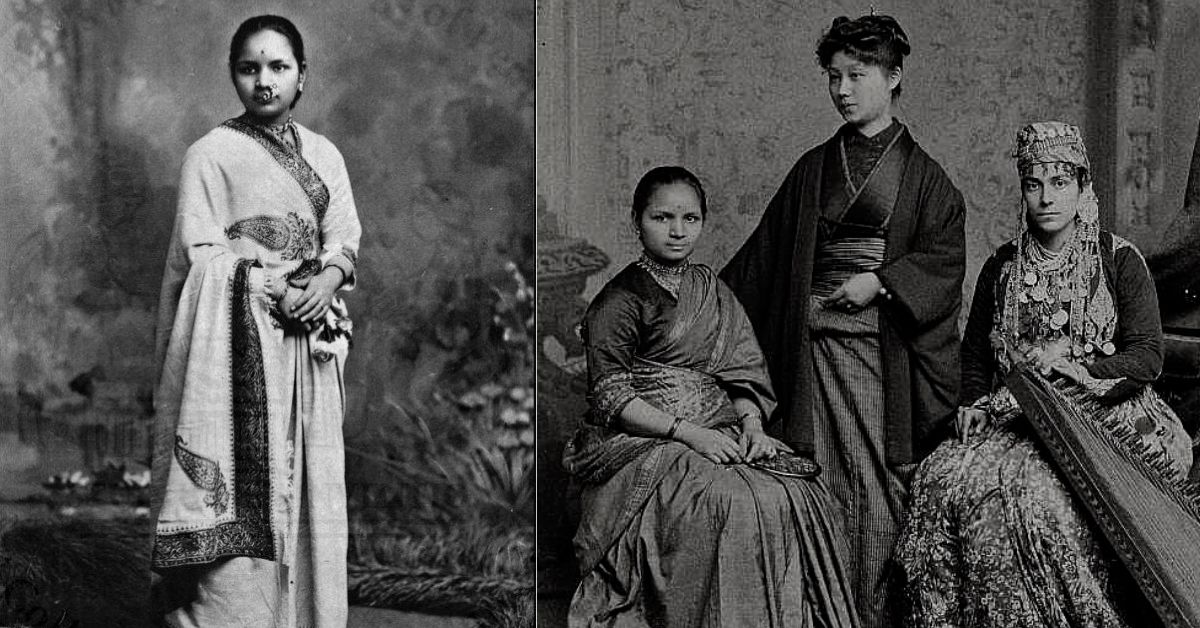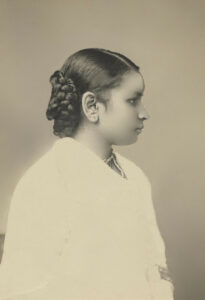This Letter Reveals What Made Anandibai Joshi Become India’s First Woman Doctor
India's first female doctor, Anandi Gopal Joshi secured a degree in medicine at the age of 21 from Women’s Medical College of Pennsylvania. Here's what motivated her to battle societal stigma and pursue and overseas education.

A headstone at a cemetery in Poughkeepsie, New York, reads: Anandibai Joshi MD (1865-1887): First Brahmin Woman to Leave India for an Education.
A Google Doodle to mark her 153rd birth anniversary; a Doordarshan Hindi serial based on her life, and healthcare fellowships for women awarded by the Maharashtra government in her name — these are only a few honours that reflect the legacy of Anandi Gopal Joshi.
She is considered by most to be the first Indian woman to secure a degree in Western medicine.
Born in 1865 to an orthodox Marathi Hindu family of landlords in Kalyan of Thane district, a nine-year-old Anandi, then Yamuna, was married off to a widower by the name of Gopalrao Joshi. Despite being older than Anandi by almost 20 years, it was his progressive thinking that played a landmark role in her becoming one of the earliest pioneers of the country’s healthcare sector. Appropriate medical care was a rarity in pre-independent India, and the couple were further entwined in the grief of losing their 10-day-old infant son when Anandi was merely 14 years old.
In 1883, Gopalrao was transferred to Serampore, West Bengal, after having served as a postal clerk in the Maharashtrian towns of Kalyan, Alibaug and Kolhapur. Soon after, Anandi headed to the States and wrote a moving admissions application to the Superintendent of the Medical College of Pennsylvania in Philadelphia, the world’s first women’s medical college and eventually, her alma mater.
Before Anandi boarded the ship from Calcutta to New York the same year she had also addressed a public gathering at the Serampore College Hall justifying her decision to pursue an overseas education in medicine.
In both these instances, Anandi detailed the multitude of reasons that set off her medical journey, and the stigma both she and her husband had been subjected to, as a direct result of this decision. So, what did she say?

‘I volunteer to qualify myself a Hindu lady doctor.’
In 19th century India, women looking to pursue a career in medicine were expected to work as midwives. Even as a doctoral course was available in Chennai, its male instructors were conservative and the idea of women students was frowned upon. The subsequent and utter lack of female doctors in the country further limited the reach of crucial healthcare to its women, who felt uncomfortable being assessed by male professionals.
Back in 1880, Gopalrao had also sent a letter to Royal Wilder, a prominent American missionary, requesting aid in securing admission for Anandi, in addition to an employment opportunity for himself. Wilder wrote back and said he could oblige on the fulfilment of one condition — the Joshis would have to convert to Christianity. The Brahmin couple were vehemently against this preposition, though they were aware of the benefits of doing so even within India.
“A convert who wears an English dress is not much stared at. Native Christian ladies are free from the opposition and public scandal which Hindu ladies like me have to meet within and without the zenana,” Anandi said, referring to the segregated spaces for women in Hindu and Muslim households during the olden days.
News of her impending departure to the States in 1883 had spread, but the couple was subjected to harassment from all communities alike. Crossing the sea to reach a distant, foreign land was considered a sin in orthodox ‘upper-caste’ Hindu circles. People made unsolicited remarks, threw stones and cow dung at the couple’s residence, and even made a ruckus at the post office where Gopalrao worked. But their aspirations were set in stone.
“I go to America because I wish to study medicine,” an 18-year-old Anandi declared to her audience at the Serampore College Hall. “Ladies, both European and Native, are naturally averse to exposing themselves in cases of emergency to treatment by doctors of the other sex. In my humble opinion, there is a growing need for Hindu lady doctors in India, and I volunteer to qualify myself for one.”
She further pledged that she would not convert to Christianity and vocalised her ambition of opening an Indian medical college for women, on her subsequent return to the country.
Anandi’s speech, whose audience also included the American Consul General, was widely publicised and financial aid to support her noble endeavour poured in from across the country. Notably, Marquess of Ripon, then Viceroy of India, also contributed Rs 200 to the sum.
Journey of Sheer Determination
While Wilder couldn’t help Anandi secure admission to an American medical college, he had their correspondence published in Missionary Review, Princeton University’s periodical. This eventually caught the eye of one Theodicia Carpenter, and the New Jersey-based woman wrote to Anandi in 1880, expressing a desire to support her in her educational journey in whichever way possible.
Their mutual affection for three years lead to Theodicia eventually receiving Anandi when she landed in New York. Theodicia even offered her a home to the woman who left everything she’d known to embark on a meaningful, but uncertain journey.
In an application to the Superintendent of the Women’s Medical College of Pennsylvania, Anandi wrote, “(The) determination which has brought me to your country against the combined opposition of my friends and caste ought to go a long way towards helping me to carry out the purpose for which I came, i.e. to render to my poor suffering countrywomen the true medical aid they so sadly need and which they would rather die than accept at the hands of a male physician (sic).”
“The voice of humanity is with me and I must not fail. My soul is moved to help the many who cannot help themselves,” she added, stating her credentials of having studied English, arithmetic and history, and speaking seven languages.
Moved by the hardships that Anandi had overcome to reach this stage, Rachel Bodley, the dean of the college, enrolled her and offered her a scholarship of $600 every month for the duration of the programme. Three years later, it was Anandi’s sheer determination and perseverance that led her to complete an MD degree, with a thesis on the “Obstetrics among the Aryan Hindoos”.
Anandi graduated with Kei Okami and Tabat Islambooly, and all three became the first women to attain a degree in Western medicine in India, Japan and Syria, respectively.
In her graduation ceremony on 11 March 1886, Anandi received a standing ovation, with the president of the college saying, “I am proud to say that today should be recorded in golden letters in the annals of this college. We have the first Indian woman who is honouring this college by acquiring a degree in medicine. [She] has the honour to be the very first woman doctor of India.”
She also received a congratulatory message from Queen Victoria, who was informed of the former’s accomplishment by the college dean. On her return to India, Anandi, then 21, was appointed as the physician-in-charge of the female ward of the Albert Edward Hospital by the princely state of Kolhapur.
Even independence activist Lokmanya Bal Gangadhar Tilak, who had founded Marathi daily Kesari, couldn’t help but reach out to her. “I know how in the face of all the difficulties you went to a foreign country and acquired knowledge with such diligence. You are one of the greatest women of our modern era,” he wrote in his letter.
In a massive loss to the country, however, Anandi could not open the women’s medical college she’d envisioned, or put her hard-earned knowledge to practice for too long. On February 26, 1887, she succumbed to tuberculosis when she was only 22 years old. A grief-stricken Theodicia requested Gopalrao to dispatch Anandi’s ashes, which were eventually buried in her family cemetery at Poughkeepsie.
Anandi’s remarkable life may have met an abruptly ironic end, but it offers a glimpse into the depravity of societal expectations since time immemorial. More importantly, how one can, and must, overcome these to pursue an ambition for both personal fulfilment and the larger good of the community. Suffice to say, it lingers on as an inspiration for the generations to come.
If you found our stories insightful, informative, or even just enjoyable, we invite you to consider making a voluntary payment to support the work we do at The Better India. Your contribution helps us continue producing quality content that educates, inspires, and drives positive change.
Choose one of the payment options below for your contribution-
By paying for the stories you value, you directly contribute to sustaining our efforts focused on making a difference in the world. Together, let’s ensure that impactful stories continue to be told and shared, enriching lives and communities alike.
Thank you for your support. Here are some frequently asked questions you might find helpful to know why you are contributing?


This story made me
-
97
-
121
-
89
-
167













